The final frontier
August 9, 2012
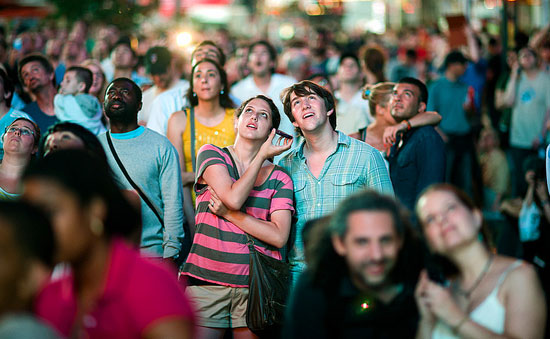
Hundreds gathered in Times Square to watch on an overhead screen the countdown to Curiosity's landing. Photo/Navid Baraty
Last Sunday, as Olympic crowds in London honored the world’s greatest athletes, Barbara and I were at the Jet Propulsion Laboratory in Pasadena, applauding the Curiosity’s touchdown on Mars. The euphoria was contagious. As beamed-back images of the Martian landscape flashed across the monitors above us, hundreds of JPL guests cheered and celebrated. NASA scientists high-fived each other. Engineers hugged.
The elation took me back 36 years to the last time I’d visited JPL, for another Mars mission. It was 1976 and an op-ed I had written about my lifelong admiration for space science had earned me an invitation to come witness the landing of the Viking 2. Compared to the hefty Curiosity probe, the Viking was a frail and rudimentary contraption; its arrival was hailed with a stream of numbers, not high-definition snapshots. But the joy and the sense of common purpose were as inspiring then as they are now.
The contribution space science has made to this region is easy to take for granted. So is the importance of places like JPL in our local economy. When someone mentions Southern California, most people don’t think immediately of rocket scientists and research institutions, and the aerospace industry is no longer the juggernaut here that it was in the Cold War era.
Still, both financially and culturally, science remains a powerful force here. From ear thermometers and earthquake mapping to historic missions like those of the space shuttle Endeavour, the technology and products of space exploration touch lives every day around the world and throughout our region. More than 5,000 Southern Californians work full-time at JPL and nearly 4,000 more are employed at the nearby campus of Caltech, which operates JPL for NASA; together, they are among the largest employers in the San Gabriel Valley, bringing in billions of dollars to the region in grants and business.
Critics may question the value of spending $2.5 billion in these challenging times on interplanetary exploration; it’s an important question. But so are the questions tackled by endeavors like the Curiosity. Is there life on other planets? Does the rest of the solar system hold clues to our fate? If Mars once had oceans, what happened to them, and what might that mean for you and me?
Back in 1976, as a young public servant operating in the unpredictable landscape of policy and persuasion, I envied the seeming straightforwardness of scientific research. Thirty-six years later, I still wish sometimes for just one human question that could be solved with an equation once and for all.
But at JPL on Sunday, it was hard not to be moved by a different aspect of science—its power to inspire us. Thousands of humans, from all over our world, had left their egos at that door in the name of a single, shared mission. Some had dedicated more than a decade of their lives to this one project.
I wondered what might happen if that kind of selflessness and teamwork were ever applied to the challenges we face here—ending homelessness, curing poverty, halting the climate change that one JPL scientist told me may have transformed Mars’s landscape. As Barbara and I walked to our car that night, I couldn’t help thinking about the all the common ground here on Earth that we still have left to explore and conquer.
Space may be an infinite mystery, but we, ourselves, are the final frontier.
Posted 8/9/12
Understanding the heat of the moment
August 9, 2012
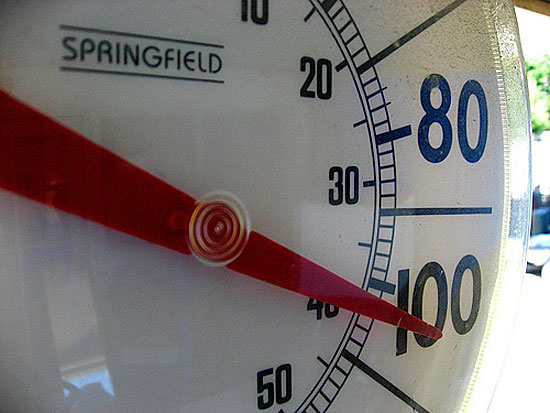
Heat plus humidity equals misery. Play it safe by following Public Health's tips for weathering the heat wave.
You don’t need a meteorologist to tell you it’s hot out there. But when planning how to cope, it helps to know what some of the weather jargon means.
When the Los Angeles County Department of Public Health declares a “Heat Advisory,” that means that the heat index—a number combining temperature and humidity to approximate what it feels like—has reached 95 or above. A “Heat Alert,” on the other hand, is issued when a heat index of 95 or above is forecast for two or more days. When a Heat Alert is issued, people are advised to take extra precautions and county cooling centers are opened to the public.
The current Heat Alert started Wednesday, August 8, and runs through Sunday, August 12. Affected areas include the San Fernando, San Gabriel, Santa Clarita and Antelope valleys, and Pomona.
The numbers behind the alerts explain a lot about how we feel.
For example, if it is 90 degrees outside with zero humidity, it will feel like 90 degrees. However, at 60 percent humidity, 90 degrees feels like 100 degrees, according to the heat index—and it also comes with the health risks of a 100-degree day. If the humidity were to reach as high as 90 percent during a 90 degree day, it would feel like a blistering 122 degrees.
According to the National Weather Service, we’re currently experiencing unusual humidity because of monsoonal moisture that is being pushed into the region by a complex of thunderstorms in Mexico and a tilted high pressure system over Nevada and New Mexico. In addition to the humidity, this moisture might also bring thunderstorms to L.A. County starting Friday and continuing through Sunday.
The heat itself, even without the humidity, has been historic. On Wednesday, a daily record high of 107 degrees was recorded in Woodland Hills, where today’s forecast calls for 106 degrees. That’s nine degrees above the monthly average, but still well below 119, the record temperature for all of L.A. County, recorded in Woodland Hills in July, 2006.
Coastal areas won’t be feeling the burn nearly as much. Thursday’s highs predicted for Malibu and Santa Monica are just 78 and 83 degrees, respectively—a relative day at the beach. In downtown L.A., the temperature is expected to approach 95 degrees.
Early August’s blazing temperatures come on heels of the hottest month ever recorded in the United States.
From a health and safety perspective, extreme heat should be handled with extreme caution. According to the Red Cross, high temperatures cause more annual fatalities in the U.S. than any other type of weather event. Children, the elderly, the disabled and pets are particularly vulnerable. Heat-related illnesses include heat rash, heat cramps, heat exhaustion and heatstroke—a life-threatening illness that requires immediate medical attention.
The L.A. County Department of Community and Senior Services maintains countywide cooling centers, including three in the San Fernando Valley, at ONEgeneration Senior Enrichment Center, San Fernando Recreation Park and San Fernando Valley Service Center. The department recommends calling ahead to ensure seating is available. The city of L.A. also manages cooling centers at various libraries, recreation centers and senior centers.
The Department of Public Health has a list of “healthy summer” tips for help staying safe in the heat, and additional advice is available online from the Centers for Disease Control and the Red Cross.
Posted 8/9/12
Big wheel turning
August 8, 2012
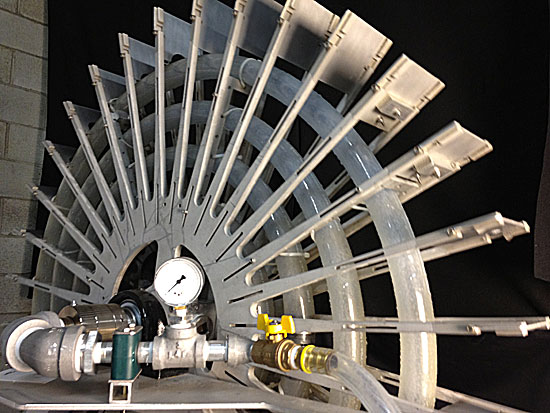
The water wheel, shown above in early prototype, would reconnect L.A. to its river and irrigate the state park.
Lauren Bon planted green rows of corn on a once-forsaken brown field in downtown Los Angeles. She enlisted military veterans to help her cultivate strawberries hydroponically on the V.A. grounds in West L.A. And now she’s preparing to make another big statement—in the form of a massive, working water wheel intended to reconnect Los Angeles with its river, its history and its current environmental realities.
The water wheel is the central element in an ambitious artwork/environmental project to be created next year on a sliver of land beside the Broadway bridge over the L.A. River. The site is right next to the Los Angeles State Historic Park at the edge of Chinatown, where Bon’s “Not a Cornfield” transformed the landscape in 2005.
Drawing on the historic water wheels that dotted Los Angeles from 1854 to 1900, this latest endeavor is being timed to coincide with the 100th anniversary of the dedication of the Los Angeles Aqueduct—November 5, 2013. The project seems destined to spur new discussion of the landmark moment in Los Angeles history when William Mulholland first watched Owens Valley water transported along the 233-mile aqueduct gush into the San Fernando Valley and famously declared, “There it is. Take it.”
While the aqueduct’s legacy has been seen variously—and often simultaneously—as an environmental tragedy, a monumental rip-off and an essential step in enabling the growth that created modern day Los Angeles, the water wheel project seeks less to judge than to inspire fresh thinking about the future.
“I think it’s really critical for us to take a pause and think about our definition of the city,” Bon says. “My position is that it’s time to look at the next hundred years. This work is about saying we need to do a lot better very quickly with figuring out two things: how to retain our water and how to send the rest of it out to sea cleaner.”
Indeed, the water wheel—to be known by its Spanish name, “LA Noria”—is expected to play a hard-working role that goes well beyond its aesthetics. Powered by the flow of the L.A. River, the turning wheel would lift river water in buckets high above the ground. The lifted water would be filtered, transported via a flume or pipe and used to irrigate the 32-acre state park while the rest rejoins the river on its way to the ocean. The project team estimates the wheel could provide 28 million gallons a year for park irrigation, potentially a $100,000-plus annual savings.
Mark Hanna, an engineer with Geosyntec Consultants who is working on the project, says the river, with 80 cubic feet of water per second flowing through “at the lowest point in the driest season,” is perfectly capable of powering the wheel.
The project to build the 60-foot wheel, with 30 feet visible above ground, is being developed and designed by Bon and her Metabolic Studio, a philanthropic endeavor of the Annenberg Foundation, of which she is a vice president and director. Exact costs aren’t yet known but are expected to reach several million dollars by the time the project is finished.
Building the wheel is one challenge. Navigating the complex maze of official permissions needed to make it a reality is another.
The public affairs lobbying firm Kindel Gagan has been hired to obtain the approvals and permits, and the firm’s Michael Gagan says he’s encouraged by initial meetings with the vast array of agencies involved.
They include the Metropolitan Transportation Authority, which owns the land, and the county Department of Public Health, which must issue a permit allowing use of the river water for irrigation. No fewer than four city departments also must sign off on different aspects of the plan—Water and Power, Planning, Building and Safety and the Bureau of Engineering—along with the state parks department, the Regional Water Quality Control Board, the county Flood Control District and the U.S. Army Corps of Engineers. Metrolink, whose trains run right past the site regularly, also is an interested party.
The Los Angeles River Cooperation Committee, a joint city-county working group that evaluates upcoming river projects, gave the water wheel its blessing at its July 9 meeting. “We think it’s super-exciting,” said Carol Armstrong, who heads the L.A. River Project Office of the city Bureau of Engineering.
At the moment, the clock is ticking—literally—inside the studio, where an electronic red countdown sign marks off the time remaining until the aqueduct’s 100th anniversary.
Still, Bon doesn’t doubt for a minute that her project will be able to beat the clock.
“It’s gonna happen,” she says.
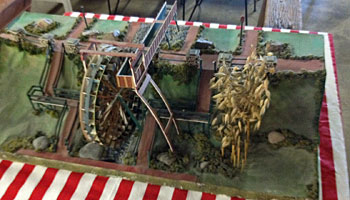
A community activist shared this model depicting the neighborhood's original water wheel as it might have looked in the 1850s.
Bon, who always likes to introduce what she calls a “device of wonder” into her projects, including “Strawberry Flag” at the V.A. and “Not a Cornfield” in the State Historic Park, sees the water wheel as a natural extension of that work. “These aren’t just surprising little projects that are popping up,” she says. The water wheel is “part of three signature projects that all share a definition of the city.”
The wheel also relates to another project currently underway called “Silver and Water.” That expansive, multimedia work-in-progress aims to tell the story about how the “alchemy of photography and Hollywood,” fueled by silver mined in the Inyo ranges and water from the Eastern Sierra, helped create the movies—and Los Angeles itself. One of the project’s elements is a traveling “liminal camera”—basically a massive pinhole camera capable of taking huge photographs—that has been built in a reclaimed container on a flatbed truck.
On a recent day, the liminal camera, which Bon dubs “the largest pocket instamatic camera in the world,” was parked outside the studio, close to where the water wheel would be built.
Inside, another machine, in the form of a working, aluminum prototype of the proposed water wheel, stands ready to make a public debut this week. While the model doesn’t show exactly how the water wheel will function in its final incarnation, it will be Exhibit A at a community open house on Thursday, August 9. The gathering runs from 6 p.m. to 8 p.m. at Metabolic Studio, 1745 N. Spring St., Los Angeles, with the parking and entrance located off Baker Street.
Even before the open house, Solano Canyon resident Alicia Brown said awareness of the water wheel project is building in the area. “Most of my neighbors, they know. Some have taken it lightly; others are amazed,” says Brown, who’s lived in the neighborhood since 1939.
Brown dropped by Bon’s studio recently with her own tabletop model of the historic water wheel that in the 1850s served her community, not far from where Bon’s project is to be installed. An architecture student built the model and gave it to her years ago; now she thinks it could help inspire the new incarnation. Although it’s likely that the new water wheel will be made of metal, Brown is holding out hope for wood, to more closely replicate the original.
“I’ve always loved this neighborhood so much,” says Brown, a neighborhood activist and history buff who for years has been fascinated by Solano Canyon’s vanished water wheel. “There was one there, and people should know.”
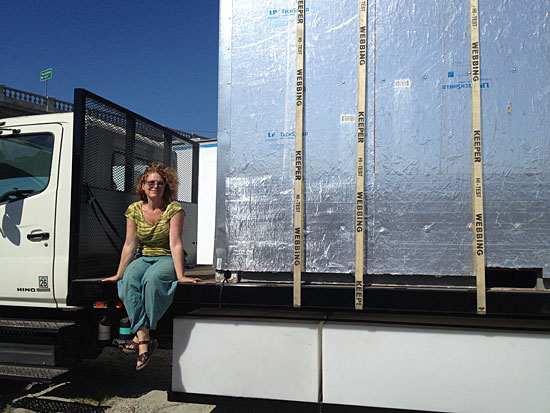
Artist Lauren Bon with Metabolic Studio's "liminal camera," near the site of the proposed water wheel installation.
Posted 8/8/12
These school supplies are free
August 8, 2012
Did anyone just hear a collective sigh? That’s the sound of local students and parents realizing that for many, school starts on August 14 this year—three weeks earlier than usual. To ease the transition, parents and young scholars can go to the Back to School Family Resource Fair this Saturday at El Cariso Park.
Perhaps the biggest draw of the annual fair is the free giveaways, especially the backpacks. However, this year there’s a twist—kids will be required to investigate some of the other resources that are available before picking up their freebies.
Those other resources are as good as the free swag, if not better. There will be dental screenings from the UCLA School of Dentistry and asthma screenings from the Northeast Valley Health Corporation along with vision screenings, information about immunizations and mental health resources.
The L.A. County Sheriff’s Department will provide radKIDS public safety training, the Masonic Lodge will offer child fingerprinting and the county Fire Department’s “Quakey Shakey Schoolhouse” will put a fun, active spin on earthquake preparedness. The Pacoima nonprofit ABC Learn will be on hand with free books, stickers and pencils, along with information about their tutoring and other after-school programs.
Since this is an outdoor event during these dog days of August, organizers will provide canopies, squirt bottles and free water to keep everyone safe, cool and hydrated. Even better, El Cariso’s swimming pool will be open and free to the public from 12:30 p.m. to 5 p.m. on the day of the event.
The resource fair takes place Saturday, August 11, from 12 p.m. to 3 p.m. The free giveaways will be available as long as supplies last. El Cariso Park is located at 13100 Hubbard Street in Sylmar.
Posted 8/8/12
Quite an Endeavour
August 8, 2012
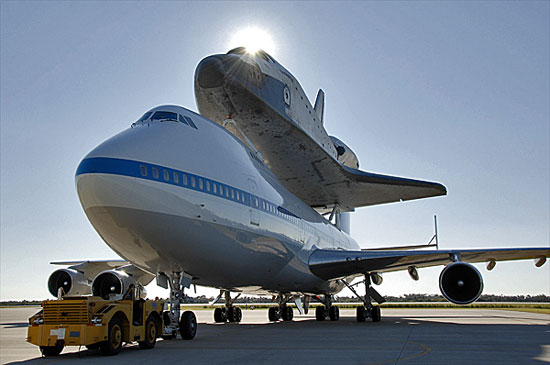
To get to Los Angeles, the space shuttle will hitch a ride on a 747, as it did here on an earlier mission.
Get ready, L.A., the space shuttle Endeavour will soon be rolling like a rock star.
On October 12, weather permitting, the decommissioned shuttle will begin a three-day, 12-mile journey from Los Angeles International Airport to the California Science Center in Exposition Park, the orbiter’s new retirement home.
Officials predict that the 2-m.p.h. urban journey will draw thousands of onlookers, reminiscent of the raucous crowds that turned out for The Rock’s four-county crawl to the Los Angeles Museum of Art, where it became the centerpiece of artist Michael Heizer’s “Levitated Mass.” The shuttle’s passage will mostly take place along Manchester Avenue, Crenshaw Boulevard and Martin Luther King Boulevard. (See map below.)
Mayor Antonio Villaraigosa, who joined Science Center and NASA officials to announce Endeavour’s itinerary, called the upcoming transport a “once-in-a-lifetime event” for the Los Angeles region, which he noted shares a long and storied history with aeronautics and space exploration. Just this week, scientists at JPL in Pasadena made history with the high-risk touch-down of the rover Curiosity on Mars.
In all, Endeavour completed 25 flights, totaling 4,671 Earth orbits. It was built to replace the Challenger, which exploded shortly after takeoff in 1986, claiming the lives of all 7 astronauts. Endeavour flew its final mission to the International Space Station in May of last year. Among the orbiter’s final crew was Commander Mike Kelly, whose wife, former Arizona Rep. Gabrielle Giffords was seriously wounded by a gunman last year.
With the 30-year shuttle program now over, Endeavour is one of three shuttles that will go on display around the country, and the first to travel along city streets. The others—Discovery at the Smithsonian outside Washington, D.C. and Atlantis in Florida—have already been delivered.
Endeavor is scheduled to arrive at LAX from Florida’s Kennedy Space Center on September 20, riding piggyback on a Boeing 747. That date, however, is dependent on weather conditions, said Stephanie Stilson of NASA, a key player in the transport. “Water drops can become like BB’s” on the fragile surface of the 170,000-pound craft, she said.
After the shuttle is removed from its carrier with a series of cranes and slings, it will be placed on the “Overland Transporter,” a frame built by NASA for “state of the art maneuverability and stability,” according to the agency.
And it’ll need it.
Some stretches of the passage to the Science Center are so narrow that some trees may need to be removed to accommodate the craft’s 78-foot wingspan. In those cases, two trees will be planted for each one that must be uprooted. Villaraigosa said that, like the shuttle itself, its earth-bound journey will be “a marvel of ingenuity and engineering.”
Along the way, on October 13, there’ll be an official ceremony at Inglewood City Hall in the morning and a curbside celebration that evening produced by dancer/choreographer Debbie Allen at the intersection of MLK and Crenshaw boulevards.
At the Science Center, the spacecraft initially will be housed in a cavernous temporary hangar, which is scheduled to be open to the public starting October 30 for the exhibition “Mission 26: The Big Endeavor.” Eventually, the shuttle will be the centerpiece of the new Samuel Oschin Air and Space Center. The $200 million price for the new center and Endeavour’s transport is being underwritten by private donors.
View Mission 26: The Big Endeavour in a larger map
Posted 8/8/12
Fighting poverty with a winning team
August 3, 2012
The Pacoima-based anti-poverty organization MEND says that volunteers are the “lifeblood” of their agency—and they’d love a transfusion of your time and energy.
MEND, which stands for Meet Each Need with Dignity, recently was named California’s Nonprofit of the Year by the Office of the Governor and CaliforniaVolunteers. The award honors a group that has shown “an extraordinary ability to leverage volunteers in service to their organization.”
In the case of MEND, more than 3,000 volunteers help with everything from a clothing center and emergency food bank to dental, vision and medical clinics. The organization also offers a range of training and educational programs, including after-school tutoring. Special initiatives include a “Seed to Supper” program in which young people attend Saturday sessions to learn about gardening and nutrition, culminating in a “harvest celebration supper.”
If you’d like to sign up to help MEND in any capacity, more information is here. They also need contributions of clothes, food, toiletries, educational supplies and other goods. And, of course, financial help is always welcome.
Posted 8/3/12
Stay local, L.A.
August 2, 2012
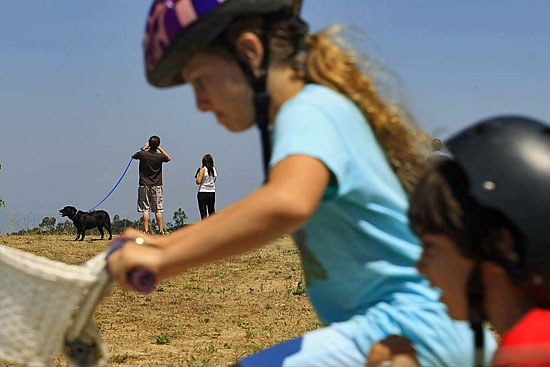
Ditch the car, hop on your bike and explore your neighborhood during Carmageddon II. Photo/L.A. Times
In the days after Carmageddon turned Los Angeles into a car-free Carmaheaven last summer, one of the comments I heard most often was: “Can you do this every month? We had a ball right in our own neighborhood.”
Unfortunately—or fortunately, depending on how you look at it—closing down the nation’s busiest freeway for an entire weekend isn’t something we do very often. But it is something we have to do one more time so that workers can demolish the north side of the Mulholland Bridge over the 405 Freeway in the course of 53 hours during the last weekend in September.
Carmageddon II, as we’re calling it, is an essential part of the project to modernize and add capacity to this heavily traveled stretch of freeway. And like the last time, this lengthy planned shutdown carries with it the potential for serious gridlock throughout the region if motorists ignore the warnings to steer clear of the area.
But it’s also an opportunity.
With so much going on around town and so many self-imposed pressures to stay constantly on the go, we rarely give ourselves permission to take the weekend off and savor the pleasures of simply hanging out in our own neighborhoods.
Los Angeles, consider this your permission slip. And while you’re at it, give your car the weekend off, too.
Your local business owners will thank you for it. Last summer, many of them took a hit during Carmageddon. This time around, there’s no reason to tank the local economy just to help make Carmageddon II a success. Local restaurants, shops and movie theaters are eager for your business. Whether you rediscover your neighborhood on foot, bike or public transportation, you’ll be doing them—and the rest of us—a big favor by staying close to home.
This isn’t just some feel-good exercise. It’s essential to getting through another potential traffic mess just as successfully as we did the last time. After all, the 405 is part of a massive, interconnected system. Its connecting freeways, the 10 and the 101, have plenty of their own heavy traffic to contend with at the best of times, and are also likely to feel the impact if motorists decide to tempt fate and venture out onto local roadways during Carmageddon II.
The good news is that Los Angeles drivers are as savvy as they come. Last summer, a healthy measure of fear, public spiritedness and enlightened self-interest kept most people off the roads during Carmageddon. A team of experts from UCLA and Rand analyzed the data and found traffic was down in some areas by more than 70%, compared to a typical summer weekend.
There’s no reason to think we can’t do that again. In fact, there’s more reason than ever for all of us to do our part.
Construction crews will once again be battling the clock, only this time they will have one-third more work to do in the same amount of time. Last year, they were able to finish early. This year, they’re likely to need all the time available—from the first lane closures at 7 p.m. on Friday, September 28 until the freeway reopens at 6 a.m. on Monday, October 1. For these workers, the pressure is on, big time.
For the rest of us, there’s another kind of pressure: to live up to our past Carmageddon success without getting complacent.
But the rewards are many. So please, mark your calendar and start planning to spend the last weekend of September eating, shopping and playing close to home. See you around the neighborhood.
Posted 8/2/12
Taking baby fat off the menu in L.A.
August 2, 2012
Say bye-bye to those tater tots and juice drinks, baby. Day care workers all over Los Angeles County are about to get an education on how kids ought to eat.
Thanks to a recent initiative to release of hundreds of millions of dollars in funds for early childhood development programs, the Los Angeles County Department of Public Health got the go-ahead this week on a sweeping plan to school babysitters and childcare facilities in preventing childhood obesity.
The $6 million project initially will offer workshops, coaching and follow-up assistance to about 8,000 providers on age-appropriate nutrition, portion control and exercise. However, the service, underwritten by First 5 LA, is expected to eventually expand to all of the 20,000 or so licensed and exempt caretakers operating in the county, from big Head Start programs to family day care homes to neighborhood sitters.
The outreach is considered critical because obese children have a higher likelihood of obesity in adulthood, and childhood obesity is strongly associated with grave and costly health risks such as type 2 diabetes and, over time, heart disease.
More than 16% of preschoolers between the ages of 2 and 5 are overweight in the U.S., and more than 14% are obese, according to the Centers for Disease Control. This is especially true among low-income children; in Los Angeles County, the obesity rate among 3- and 4-year-olds in the federally funded Women, Infants and Children nutrition program is more than 20%.
Those rates tend to worsen as children get older. In California, 38% of fifth- seventh- and ninth- graders were obese or overweight in 2010; in Los Angeles County, that figure stood at about 42%.
More than 350,000 infants, toddlers and pre-schoolers here spend at least part of their day in child care, where the meals they get “leave a lot to be desired,” says Dr. Robert Gilchick, DPH medical director of child and adolescent health programs and policy.
A 2008 study sponsored in part by First 5 LA found that nutrition in Los Angeles County childcare centers was generally too light on lean meat, fresh fruit and vegetables and whole-grain carbohydrates. “There were a lot of fried fish sticks and Tater Tots, and a lot of the portions were much too large for children 3 and 4 years old,” Gilchick says.
Water, in particular, was rarely on the menu. Nearly half the sites regularly served fatty meats such as fried chicken and hot dogs; four offered fried potatoes and at least one was dishing up Doritos.
And lest parents feel smug, meals were even less nutritious when children brought their own lunches.
“One child brought [four] packaged foods—chips, Cheez-Its, candy and cookies—in addition to fried potatoes, an English muffin, 20 ounces of 100% fruit juice, string cheese and yogurt,” the report found; another child’s brown bag featured a McDonald’s McGriddles sandwich with sausage and flavored milk.
Recent state legislation has begun to improve the picture. A new state law, for instance, establishes guidelines that will discourage sweetened milk, sugary “juice” drinks, sodas and other caloric junk drinks in day care facilities. Another bill, AB 1872, would mandate more milk, fruit and vegetables in the meals served in day care homes, which now are not legally obligated to follow any nutritional standards.
But a little county intervention will go a long way, says Gilchick.
In fact, he says, a pilot project conducted in about 120 South Los Angeles day care centers has already paid off. “Just a 4-hour training course actually made a difference in average nutrition scores.”
Under the new program, DPH will disburse $4.5 million for training and workshops through the Child Care Resource Center and Child Care Alliance, a consortium of 11 childcare service agencies. The rest of the $6 million will remain with the department for follow-up and oversight. “We expect to have the curricula ready for trainers by year-end,” says Gilchick. The workshops should begin in 2013.
The day care project is among many being funded under an aggressive plan to turn some of the hundreds of millions of dollars on reserve at First 5 LA in to much-needed services for children. Dedicated to programs for children age 5 and younger, the money comes from a special 1998 tobacco tax.
Last year, the surplus became a source of controversy after the governor attempted to divert unused First 5 money to help ease the state’s budget problems—an unsuccessful gambit that focused attention on First 5 LA and led to an independent audit. The audit found no malfeasance, but accused the agency of sitting on some $800 million and led to the resignation of its chief executive, Evelyn Martinez.
First 5 LA’s new spending strategy will fund programs ranging from parenting therapy to health insurance outreach to dental and vision care for small children. But it is not without critics. Some of the new and expanded programs will be carried out or overseen by the county, and an original plan, already approved by the First 5 LA Commission, would have fast-tracked several years’ worth of money into a special account to be drawn down by the departments involved as the programs develop. Some $29.1 million would have been added to the account to continue longstanding programs already being supported with First 5 LA funds, and another $58.2 million would have provided long-term funding for new projects.
The account was intended to speed services by eliminating the need to return to First 5 every year for ongoing funding, a step that had contributed to the agency’s slowness in disbursing money. But it required four votes for approval, and was blocked on Tuesday when Supervisor Mark Ridley-Thomas abstained and Supervisor Gloria Molina voted against it.
“Shame on you,” said Molina, who had been an advocate of Martinez, and who charged that the county, like the state, was merely trying to loot the First 5 surplus. “They’re just trying to make up stuff . . . to rip off the money.”
But Supervisor Zev Yaroslavsky noted that the agreements with county agencies dated back years to when Molina herself was chairing the First 5 LA Commission. “Somebody has to stand up when you castigate an entire group of bureaucrats as rip-off artists,” said Yaroslavsky. “It’s not fair.”
As a compromise, the Board approved only the multi-year contracts between First 5 LA and the county’s public health and mental health departments, which will launch the new and expanded programs but still require First 5 to renew the funding annually. The contracts, which required only three votes and passed over Molina’s no vote and Ridley-Thomas’ abstention, will pay for parent-child therapy, substance abuse treatment for at-risk parents and caregivers, outreach for the county’s Healthy Kids health insurance program and the initiative to reduce childhood obesity.
Posted 8/2/12





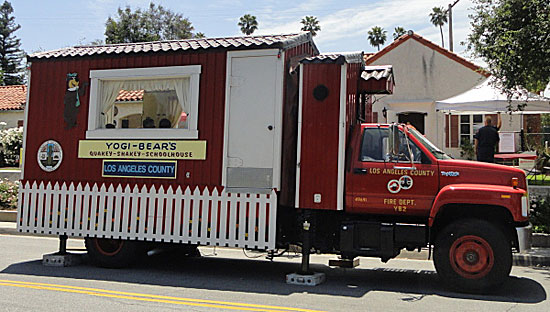
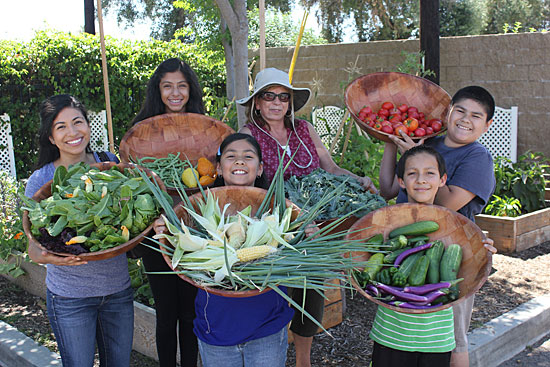

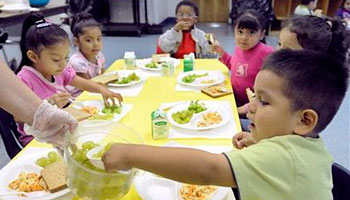





 Check for the latest closure information
Check for the latest closure information








